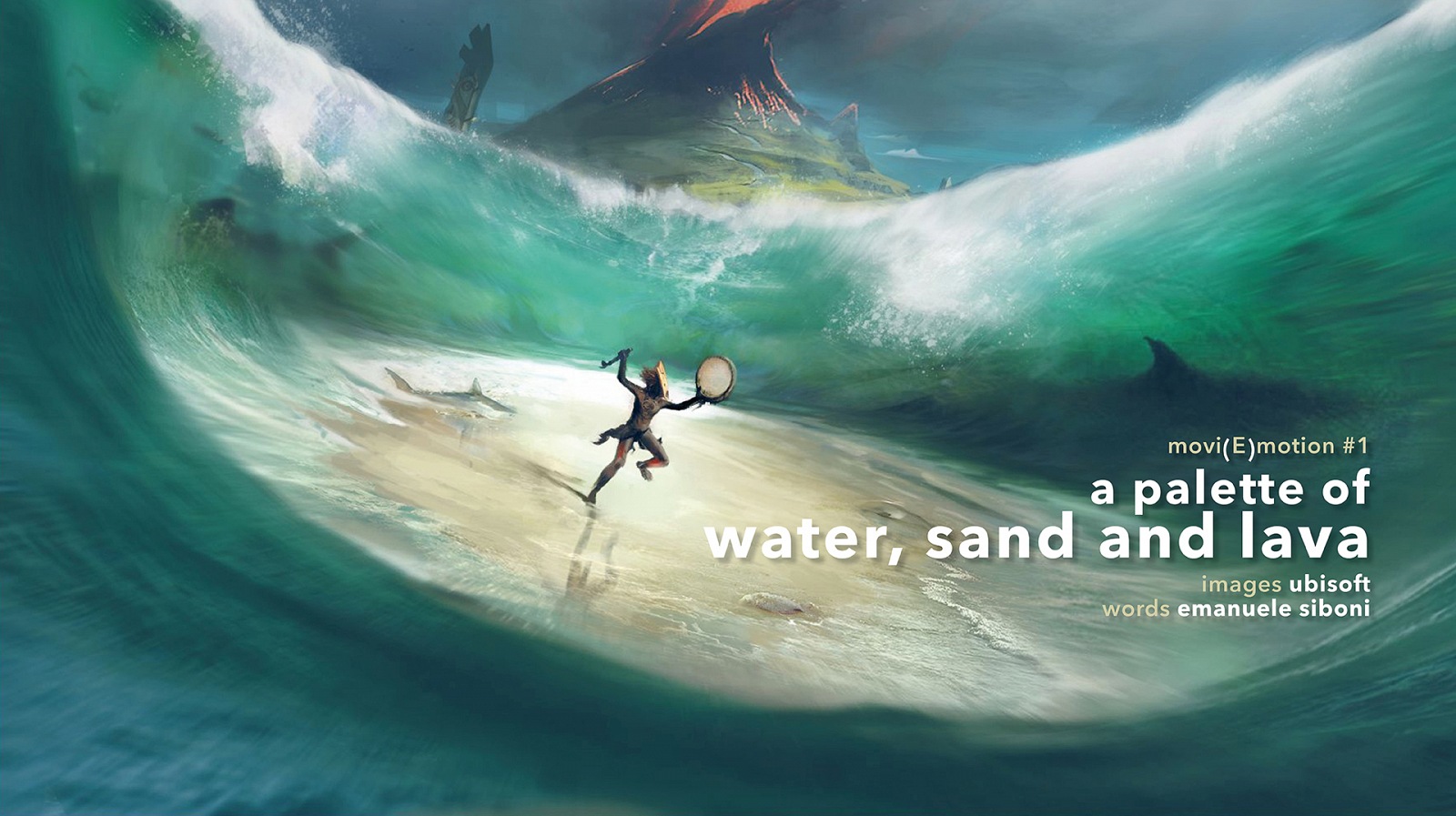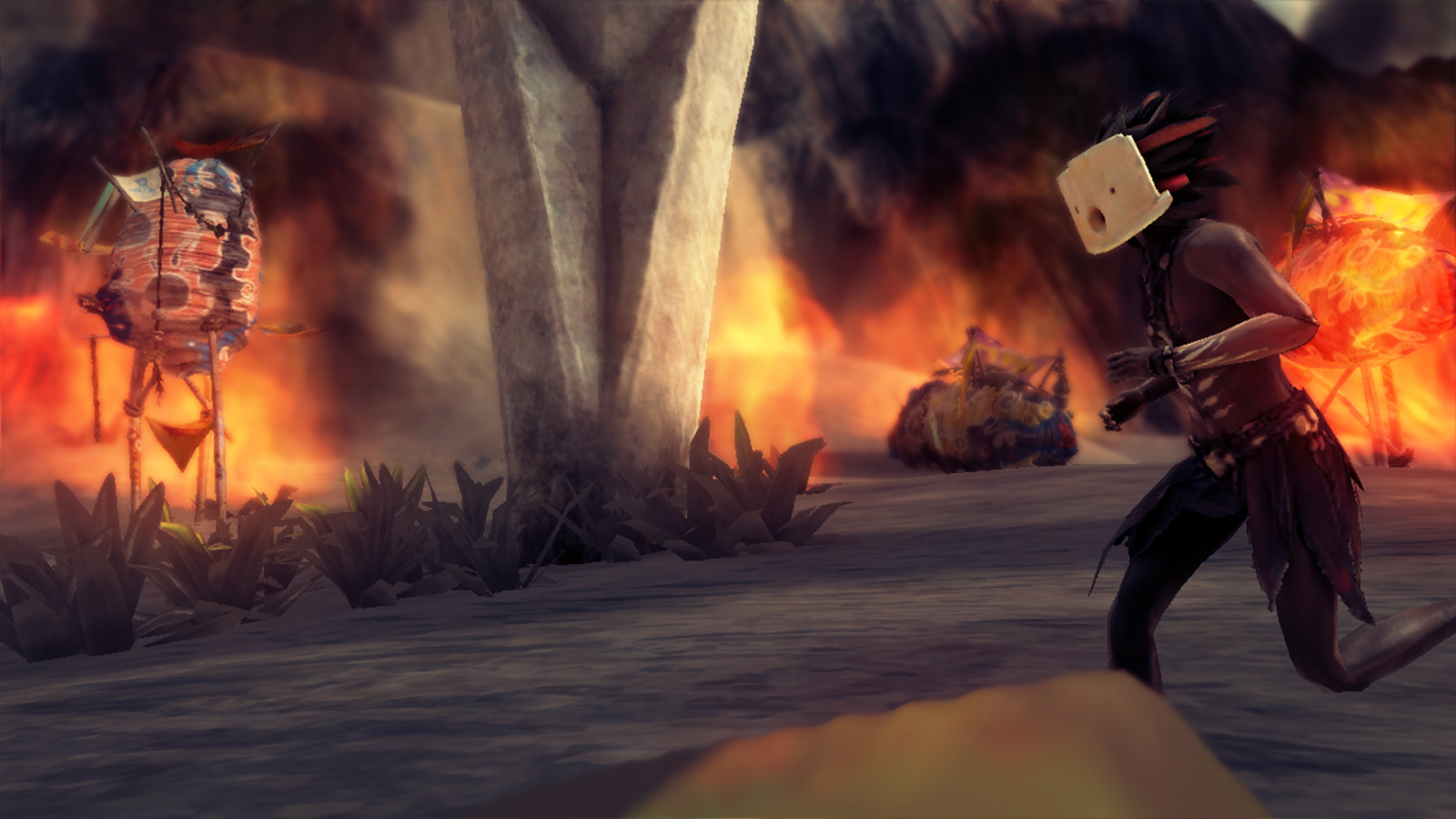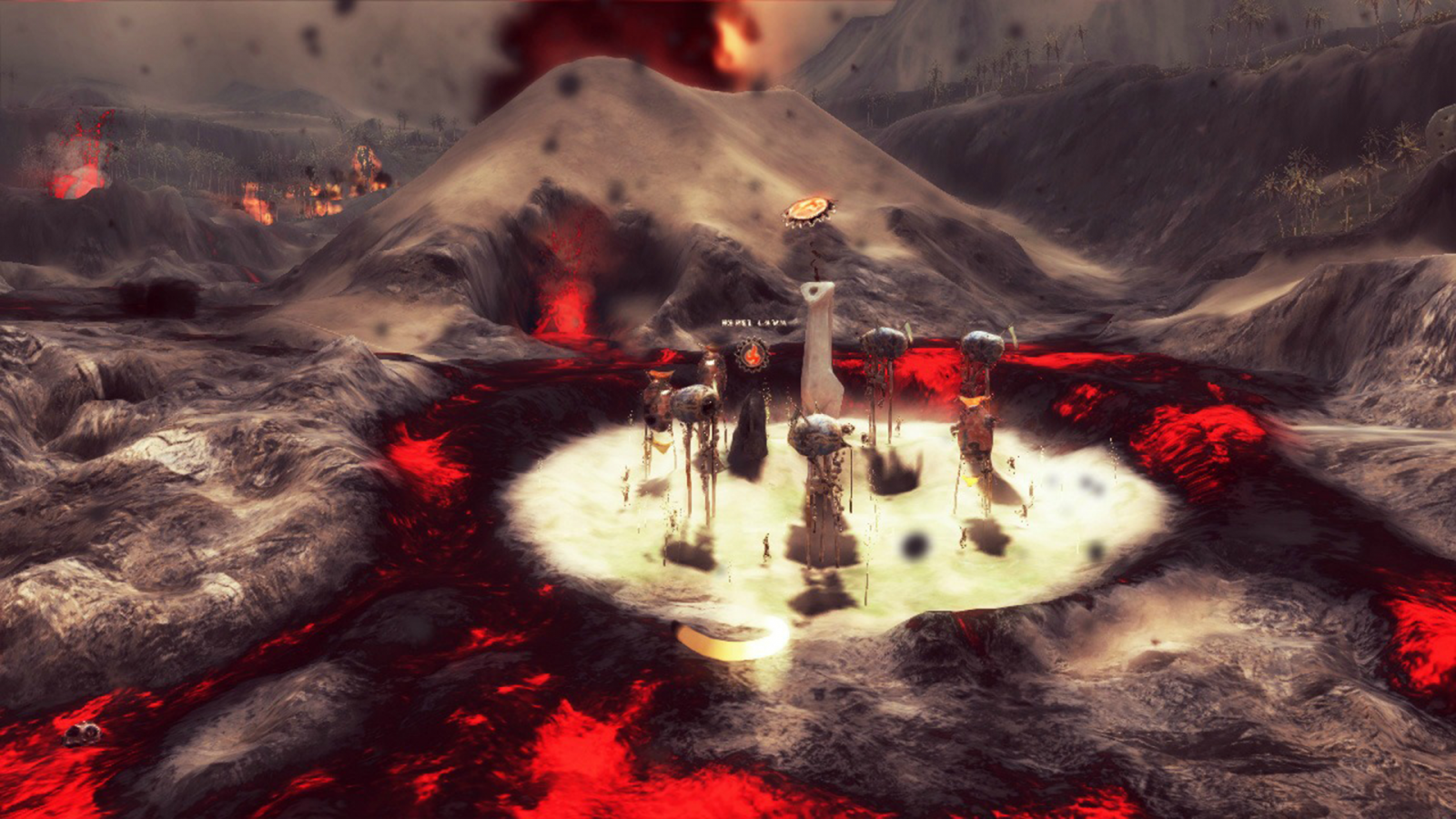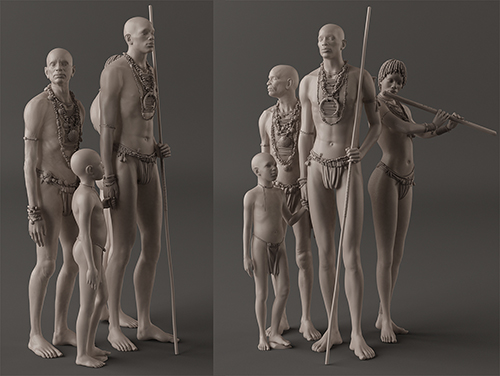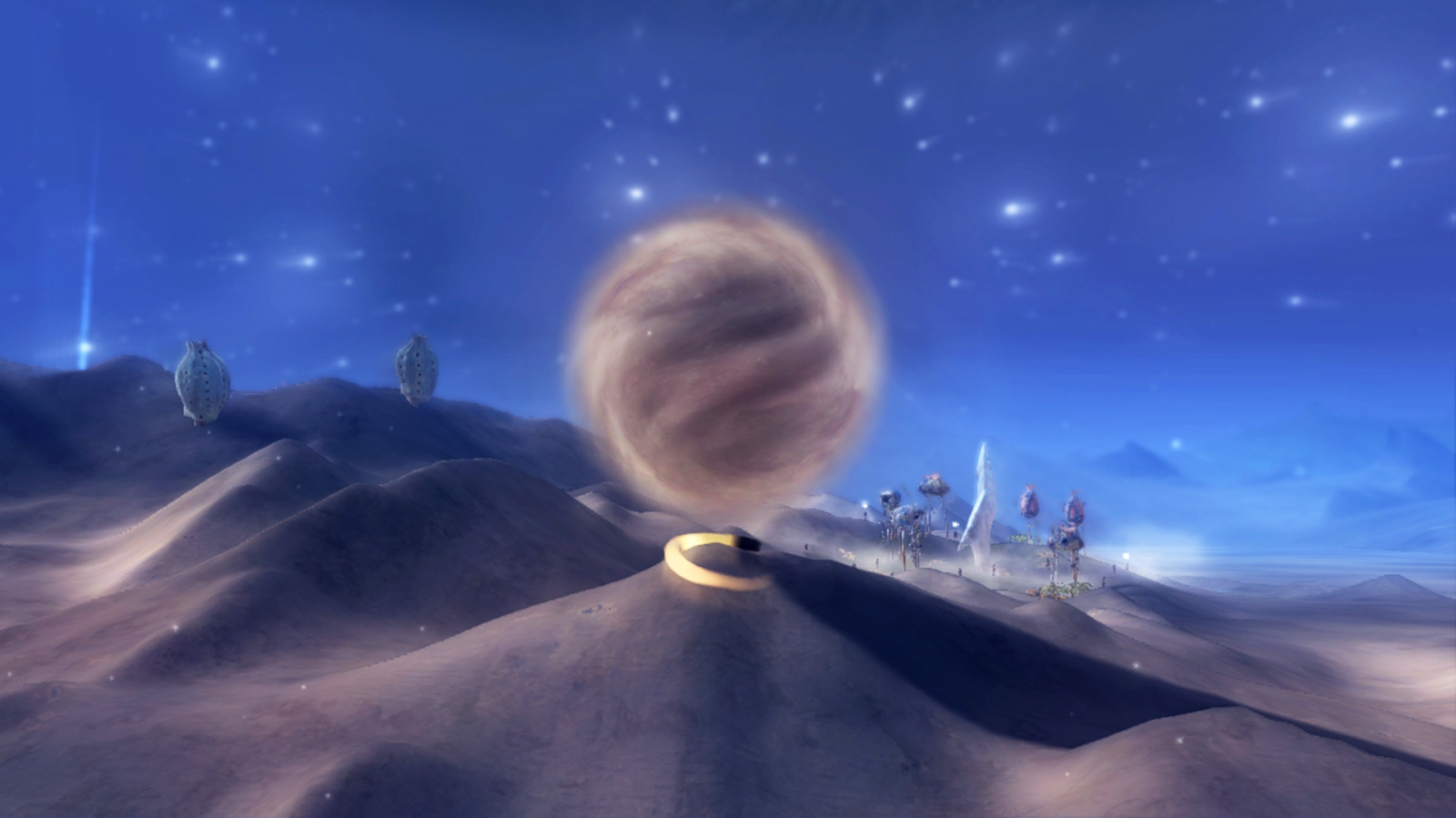It is most probably only by pretending not to hear the earnest invocations of the tribal wizard that the true nature of From Dust can be discovered; only by pretending not to see the nice suggestions of the game tutorial that that the quietness needed to create can be found: like a painter, with a cosmic brush and a palette of water, sand and lava standing in front of a live and pulsating canvas.
From Dust is a video game from 2011 with the aim of conducting a primal human tribe through an evolutionary journey that will allow them to acquire the necessary knowledge to build more and more safe and sophisticated shelters, very necessary in the wonderful but deadly nature. The tool that is given to the player is a kind of dropper represented by a dancing light, it can be moved around the territory of the island with the game controller. The dropper can absorb an element and allows the player to drop it wherever it is needed. For example, in the first chapter the tribe has to reach an ancient monument but the path is blocked by a stream of water that the savages cannot cross. By transporting sand from the beaches of the island it is possible to build a temporary strip of land that will allow the men and women of the tribe to get across. If you want a more lasting but labourious solution, it is possible to deviate the course of the entire river in order to have dry land where needed.
In From Dust, nature is in fact often ruthless and it periodically threatens the tribe with volcanic eruptions, tsunamis, earthquakes and other natural disasters. From their hand, the humans of the tribe are capable men and women learning ancient knowledge little by little: these mysteries express themselves in the form of songs and music often with magical properties that the tribe sing every time to help the build of their shelters or to create invisible barriers that will protect the village from the next natural disaster.
The range of colours on our virtual palette gets bigger, and chapter by chapter, offers new materials. Lava is constantly erupting from the volcanos on some of the islands and offers a dynamic material to fluidly shape structures that harden in a few seconds. Structures such as dams for example in order to protect the village from tides and tsunamis.
|
|
Water is available since the start of the game but it reveals its true potential especially when the lava invades and burns forests and sometimes villages. In these cases the screaming of the savages will tell us to use our tool as the best firefighters would do...
Every new technologic discovery brings a physical passage that conducts the tribe to a new island, with new vegetation, new natural disasters and further knowledge to be reached and discovered. During the game, we progressively discover the islands colonised by the ancients, each with its characteristics and its discovery mission. While the narration flows, there is however scarce information about the origins of the world or the population that we see pulsating and agitating on screen, and in my opinion, the end does not complete the picture in a satisfying way. From the one hand, the aesthetic variety and especially the brevity of each mission help the player to follow the thin narrative thread that holds together the entire experience. From the other hand, as said above, only when the player manages to forget about tribes and tsunamis the beauty of the interactive work can be understood: the player becomes the orography maker, the master of water and fire.
The range of landscape moulding possibilities is way bigger than what can be understood from its trailer or reviews. Some improvements could instead be done on the precision of the moulding tool and the control of movements and points of view. This would definitely improve the game experience especially when exploring the full potential of the interactive world represented. To be fair, it needs to be taken into account the fact that only with the adequate time and patience, creativity can be freed from rules and tutorials. It is similar to the more famous Minecraft, but with a watercolour touch to reward to eye.
[ Emanuele Siboni ]
|

 home
cover ▼
opinions
news ▼
portfolio
post.it
post.cast
video
ongoing
thematicpaths
googlecards
FPtag
home
cover ▼
opinions
news ▼
portfolio
post.it
post.cast
video
ongoing
thematicpaths
googlecards
FPtag

